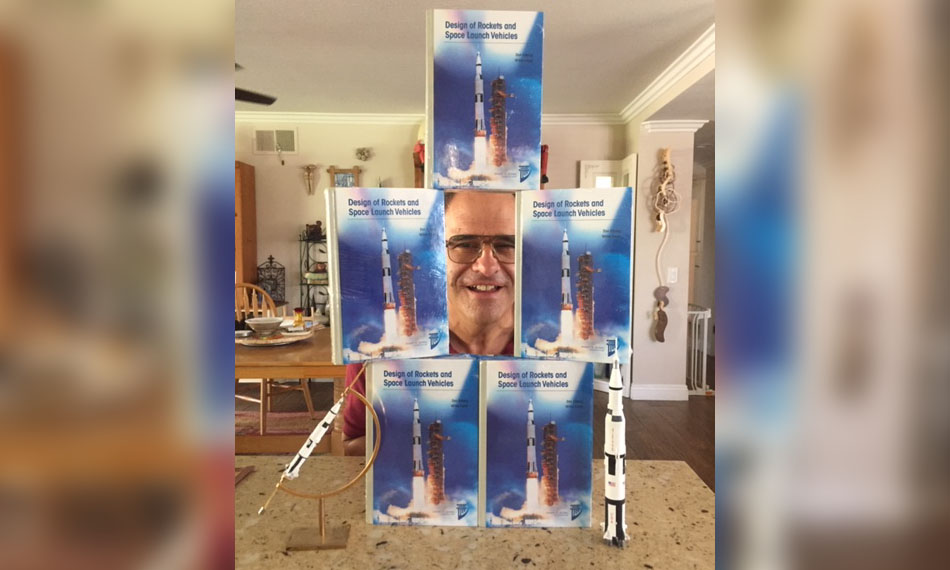How to Design a Rocket in 1,000 Pages
Edberg’s been teaching a class on how to design a space launch rocket for a decade. The current iteration of the class, “ARO 4711L - Space Launch Vehicle Design Laboratory”, and versions of the class in prior years were taught by conveying information across a collection of 1,200 PowerPoint slides Edberg developed.
The slides were a result of Edberg’s expertise on the subject and information scattered across various texts that covered parts of the class he taught. Therein lied an opportunity for him. There has yet to be a textbook that comprehensively covers the design process of a space launch vehicle from beginning to end, and Edberg started writing a textbook to fill the gap. Much of what is in the textbook guided aerospace engineering student teams in their design competitions, including an undergraduate team that won first and third in an international, graduate-level design competition hosted by the American Institute of Aeronautics and Astronautics (AIAA) in 2019.

Titled “Design of Rockets and Space Launch Vehicles”, the textbook is written for undergraduates and engineers new to the workforce but can also serve as a reference to practicing engineers. It covers the vehicle’s requirements, including specifying its performance; its aerodynamics; the vehicle’s loads as it lifts off and flies through the atmosphere; stress analysis and assessment of stability and control; the manufacturing process and the cost analysis to determine how much it will cost to build and fly it, and many other factors.
“I thought, ‘Wow this is not going to be a short book.’” says Edberg.
“I don’t recommend getting hit by a car to find time to write a book, but it did work out in that regard,” says Edberg.
Writing began in earnest four years ago. As Edberg wrote intermittently, productivity accelerated in 2018 when he was hit by a car while bicycling, breaking his femur. With little else to do but think and write, the textbook took shape.
“I don’t recommend getting hit by a car to find time to write a book, but it did work out in that regard,” says Edberg.
He also employed the help of Willie Costa (’13, aerospace engineering), who wrote three chapters and is credited as co-author. He has worked as an aerospace engineer in Boeing, NAVAIR and several NASA research centers. Currently, he is president of Vuong Enterprises, a multinational management consulting and private equity firm.
“I was, and remain, overwhelmed by the opportunity to play a very small part in helping him achieve this milestone, and helping to pave the way for future engineers,” says Costa. “I know that this has been a labor of love for Dr. Edberg, and that he has spent decades toying with the idea of collecting his thoughts and distilling them into a handy reference that engineers could keep by their side from their undergraduate days to well into their careers.”
Costa added that there is still much to cover and looks forward to doing so in subsequent editions with Edberg.
The textbook has made rounds with people working in industry. They emphatically approve of what Edberg and Costa have assembled. USC and Virginia Tech have already planned on design classes that will utilize the new textbook.
“A novice could perform a level 1 design of a rocket just by using your notes,” says Jeff Kwong, senior systems analyst at Virgin Orbit’s Vox Space.
Edberg thanks aerospace engineering department chair Dr. Ali Ahmadi for his support, and his faculty colleagues for producing students who are excited to learn more in Edberg’s class.
“And I better thank my wife too,” he says in loving jest.